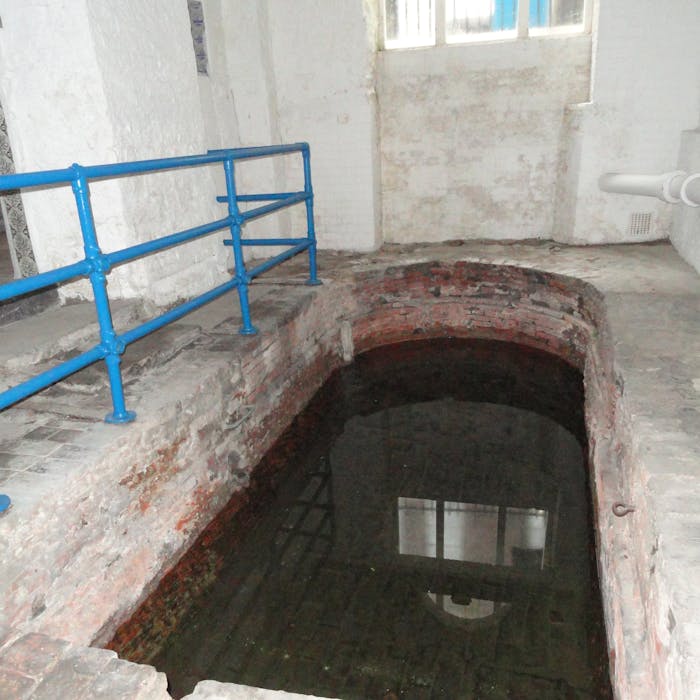
London's mysterious "Roman Bath"
In the labyrinth of narrow lanes behind the Strand, near Kings College London, there are a few discreet black signs for the National Trust's "Roman Bath" - which sounds pretty exciting. Is there really something like the Roman Baths of Bath hidden away off the Aldwych - perhaps overlooked in the guide books in favour of St Paul's Cathedral or the Tower of London?
Taking Surrey Street off the Strand and down towards the Thames, you'll see a sign and an arched gateway. 'Roman Bath - Down steps, turn right', the sign says - even though you are already at ground level. So an underground treasure from 2000 years ago seems to be on the cards. But the gate may be locked.
If it is, the intrigued visitor will need to continue towards the Thames and cut back up to the right, along an unpromising narrow alley between the modern buildings of Kings College, signed for catering deliveries. And then, suddenly, an older looking house comes into view, crossing over the alleyway, and to the side are some railings with an information board from Westminster Council. A misted up window reveals a strange and qute small stone pool. Visits inside must be pre-arranged at least a week in advance.
So, what is this place?
There were originally two baths here at 5 Strand Lane (one now lies under the cellar of the Norfolk Hotel) and, from about the 1830s, they were touted as being Roman remains.
It is now believed that they are in fact the surviving portion of a cistern built in 1612 to feed a fountain in the gardens of the old Somerset House, then a royal palace. The palace was re-modelled by King James I for his queen, Anne of Denmark, including the building of a grotto-fountain by the French engineer, Salomon de Caus. Contemporary documents establish that the cistern supplying this fountain was ‘over the Strand Lane’ and was fed by pump from the grounds of Somerset House. Further evidence from the early 18th century places the by then derelict cistern-house level with what is now No 33 Surrey Street. The Strand Lane Bath is exactly where the cistern-house for the fountain was situated. Experts date the brickwork of the bath to the range 1550–1650, which also helps this theory.
Later, in the 1700s, entrepreneurial owners refurbished the structure as a couple of cold water plunge pools.
A newspaper report of 1777 reports that a fare dodger, pursued by his angry cabbie, tried to hide in the bath and had to be rescued from drowning. In 1797, newspapers tell of a gang of fraudsters, operating from another house in Surrey Street, escaping through the Bath when they were raided. In 1792, MP, landowner and collector of ancient sculpture, William Weddell, died of a seizure in the bath.
It seems that when the baths lost their allure with the public, some bright spark thought of saying that they were Roman (as they were clearly pretty old). By the early Victorian period, this idea had been well-publicised by two books - Charles Knight’s historical guidebook to London in 1842 and Charles Dickens’s David Copperfield in which the baths feature in a couple of chapters. From there the Roman Baths found their way into an enormous range of guidebooks, popular antiquarian writing, journals and newspapers, in such a way that their antique pedigree was rarely questioned.
By the 1940s, the Roman Bath as it now was (the second one having been sold to the Norfolk Hotel to allow it to extend), was in a sorry state and was taken into the care of the National Trust.
Image from Michael Trapp and Wikimedia
Further reading
Links to external websites are not maintained by Bite Sized Britain. They are provided to give users access to additional information. Bite Sized Britain is not responsible for the content of these external websites.
